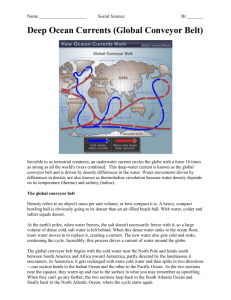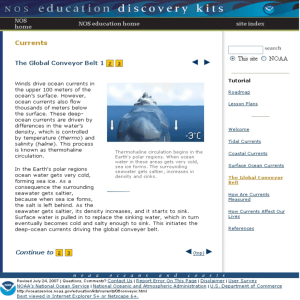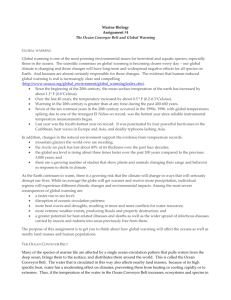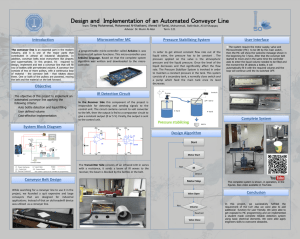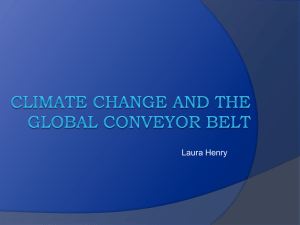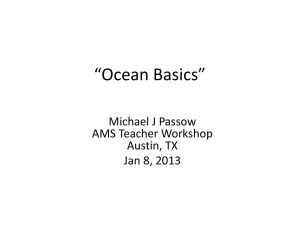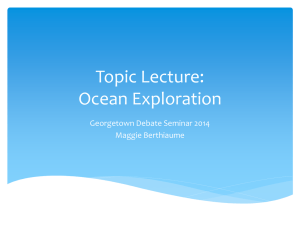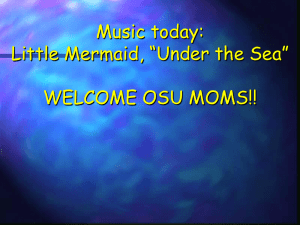Great Ocean Conveyor Belt
advertisement
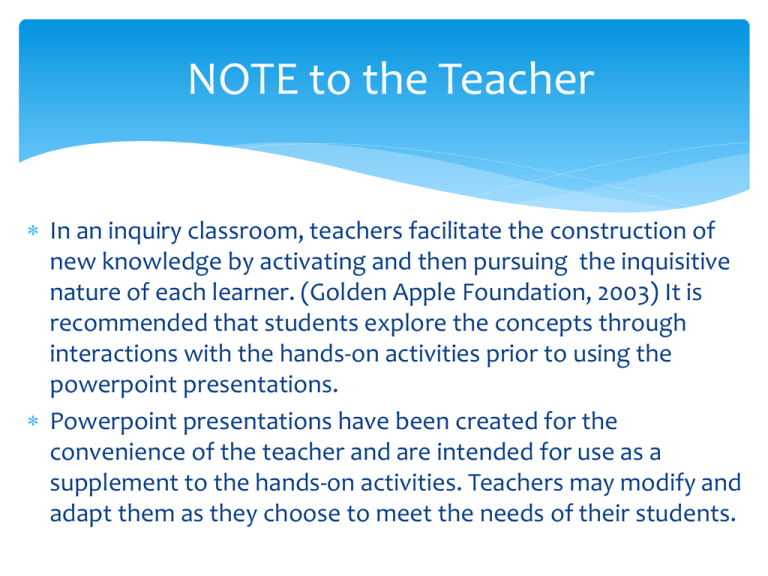
NOTE to the Teacher In an inquiry classroom, teachers facilitate the construction of new knowledge by activating and then pursuing the inquisitive nature of each learner. (Golden Apple Foundation, 2003) It is recommended that students explore the concepts through interactions with the hands-on activities prior to using the powerpoint presentations. Powerpoint presentations have been created for the convenience of the teacher and are intended for use as a supplement to the hands-on activities. Teachers may modify and adapt them as they choose to meet the needs of their students. In these two activities (Cold Salty Deep and Global Ocean Conveyor Belt), students create models of ocean currents to demonstrate the thermohaline circulation of water throughout the Earth’s system. Cold, Salty, Deep & Global Ocean Conveyor Belt ELF Activities: Hydrosphere 3A & 3B http://andrill.org/education/elf/activities/3a http://andrill.org/education/elf/activities/3B There is only one ocean and the waters are not still. www.noaa.gov In the above picture notice how the waters of all the oceans are connected. Cold, salty, dense water sinks under warmer, fresher water. The sinking of cold water at the poles and its replacement by warmer water from the equator creates a current. This is called a thermohaline circulation because it is based on temperature and water density due to salt content. thermo = temperature haline = salt Image: national academy of sciences Due to winds and surface currents, the waters continually move and mix. www.noaa.gov This map shows the movement of surface water due to the action of the winds. The Great Ocean Conveyor Belt www.noaa.gov Red = warm surface water Blue = cold salty deep water A Polar View of the Global Ocean Conveyor Belt www.wikipedia.com Warm water carried north away from the Equator provides Europe with mild winters. Satellite image showing water temperatures along the eastern U.S. Images: www.noaa.gov This material is based on work supported by an Environmental Literacy Grant from the National Oceanic and Atmospheric Administration’s Office of Education (NA09SEC4690009) and prior work supported by the National Science Foundation under Grants ANT-0342484 and ESI-0632175. Any opinions, findings, and conclusions or recommendations expressed in these materials are those of the authors and do not necessarily reflect the views of the National Oceanic and Atmospheric Administration or the National Science Foundation. http://andrill.org/education/elf/activities


